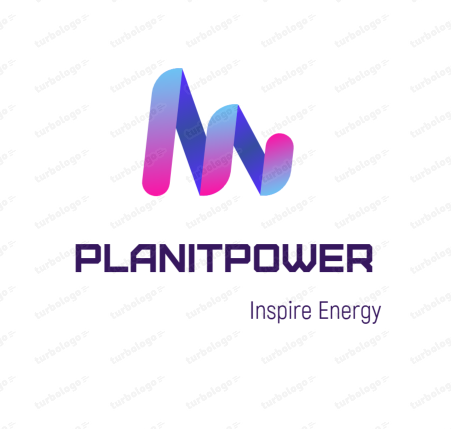No products in the cart.


Artificial Intelligence (AI) is reshaping how we illuminate our spaces, enhancing energy efficiency, comfort, and sustainability. AI-driven lighting systems applications offer innovative solutions that combine intelligence, automation, and adaptability. By integrating advanced technologies, these systems create dynamic lighting environments that respond to human needs, natural light levels, and energy efficiency goals. This article explores the available technologies, their advantages, return on investment (ROI), real-world applications, and integration into smart buildings.
Available AI-Driven Lighting Technologies
AI-driven lighting systems combine sensors, data analytics, and intelligent algorithms to automate and optimize lighting in homes and buildings. Here are the leading technologies currently on the market:
1. Smart Sensors with AI Algorithms
- How It Works:
Smart sensors detect occupancy, motion, and ambient light levels. AI algorithms dynamically analyze these inputs to adjust brightness, color temperature, and energy consumption. - Example: Motion detectors paired with AI ensure lights turn on only when needed and dim when spaces are unoccupied.
2. Adaptive Lighting Systems
- How It Works:
These systems use AI to emulate natural light cycles, adjusting brightness and color temperature based on the time of day. - Example: Tunable white LED systems provide cooler light in the morning for alertness and warmer tones in the evening for relaxation.
3. Predictive Lighting Control
- How It Works:
AI-driven lighting anticipates user needs by analyzing historical data and behavioral patterns. - Example: A smart home system might predict when a resident returns home and pre-illuminate pathways accordingly.
4. Integration with IoT and Smart Home Ecosystems
- How It Works:
These systems connect with other smart devices, such as thermostats and window blinds, to enhance overall building efficiency. - Example: AI can synchronize lighting with HVAC systems to optimize energy use.
5. Voice-Controlled Lighting with AI Assistants
- How It Works:
Integrated with AI-powered virtual assistants like Alexa or Google Assistant, these systems enable voice-activated lighting control. - Example: “Turn on the living room lights at 50% brightness” triggers an optimized lighting setup instantly.
Advantages and ROI of AI-Driven Lighting Systems
Energy Efficiency
AI-driven systems can reduce energy consumption by up to 50-80% through optimized usage. For instance, daylight harvesting systems save significant energy by dimming artificial lights when natural light suffices.
Cost Savings
- ROI Metrics:
- Initial investment in AI-driven lighting may range from €500 for households to €50,000 for commercial buildings.
- Energy savings lead to ROI within 2-5 years, depending on usage patterns.
- Reduced maintenance costs through automated fault detection and predictive maintenance.
Enhanced Comfort and Productivity
Adaptive lighting mimics natural daylight, improving occupant well-being. Studies show that well-lit environments boost productivity by 15% and reduce stress.
Environmental Impact
These systems support sustainability goals by lowering energy usage and carbon emissions. For example, replacing traditional lighting with AI-controlled LEDs in a mid-sized office building can reduce CO₂ emissions by 40 metric tons annually.
Examples of AI-Driven Lighting Systems in Action
1. The Edge, Amsterdam
- The Edge, known as one of the greenest buildings in the world, uses AI-driven lighting integrated with a smart building management system.
- Features:
- Over 6,500 smart LED lights adapt to occupancy and daylight.
- The system cuts energy consumption by 70% compared to conventional lighting setups.
2. Smart Homes in Copenhagen
- Many residential complexes in Copenhagen have implemented AI-based lighting solutions for energy efficiency.
- Result: Residents reported energy savings of up to 60%, with improved indoor lighting quality.
3. Asia Square Tower, Singapore
- This commercial hub employs AI-integrated lighting to complement its energy-efficient design.
- Outcome: Reduced energy costs by 50%, with a payback period of just 4 years.
Integration of AI-Driven Lighting in Smart Buildings
AI-driven lighting systems seamlessly integrate into smart buildings through advanced communication protocols, including:
Building Management Systems (BMS)
- AI systems communicate with BMS to align lighting with HVAC, security, and other building systems.
- Example: If AI detects increased sunlight, it signals BMS to adjust blinds and reduce artificial lighting.
IoT Ecosystem Compatibility
- Lighting systems connect with IoT devices via Zigbee, Z-Wave, or Wi-Fi.
- Benefit: Remote monitoring and control through smartphones or cloud-based platforms.
Real-Time Data Analytics
- AI collects and processes data from sensors for real-time lighting optimization.
- Example: In a smart office, lighting adjusts instantly based on occupancy density.
Top AI-Driven Lighting Brands and Pricing
1. Signify (Philips Hue)
- Features: Tunable white and color ambiance lighting, compatible with major smart home platforms.
- Price:
- Starter kits for households: €150-€300.
- Commercial systems: Starting from €15,000.
2. Helvar
- Features: Scandinavian brand specializing in intelligent lighting solutions for offices and public spaces.
- Price: Custom solutions starting at €20,000.
3. Lutron Electronics
- Features: AI-integrated daylight harvesting systems and adaptive controls.
- Price:
- Home solutions: €800-€2,000.
- Large-scale projects: €30,000-€50,000.
4. Trilux
- Features: German brand offering AI-powered lighting for industrial and commercial spaces.
- Price: Starting from €10,000 for industrial applications.
5. Casambi
- Features: Bluetooth-based AI lighting solutions.
- Price: Affordable for small-scale setups, starting at €500.
Conclusion: Inspiring Energy with AI-Driven Lighting Systems
AI-driven lighting systems applications represent a transformative leap in building and household lighting, combining technology and sustainability. These systems save energy, reduce costs, and enhance occupant comfort while aligning with global sustainability goals.
By integrating seamlessly with smart building ecosystems, they unlock unparalleled efficiencies and user experiences. As PlanItPower’s slogan, Inspire energy, suggests, these technologies illuminate not just spaces but also the path toward a more sustainable and energy-conscious future.
What’s your reaction?
Love0
sad0
Happy0
Sleepy0
Angry0
Dead0
Wink0





